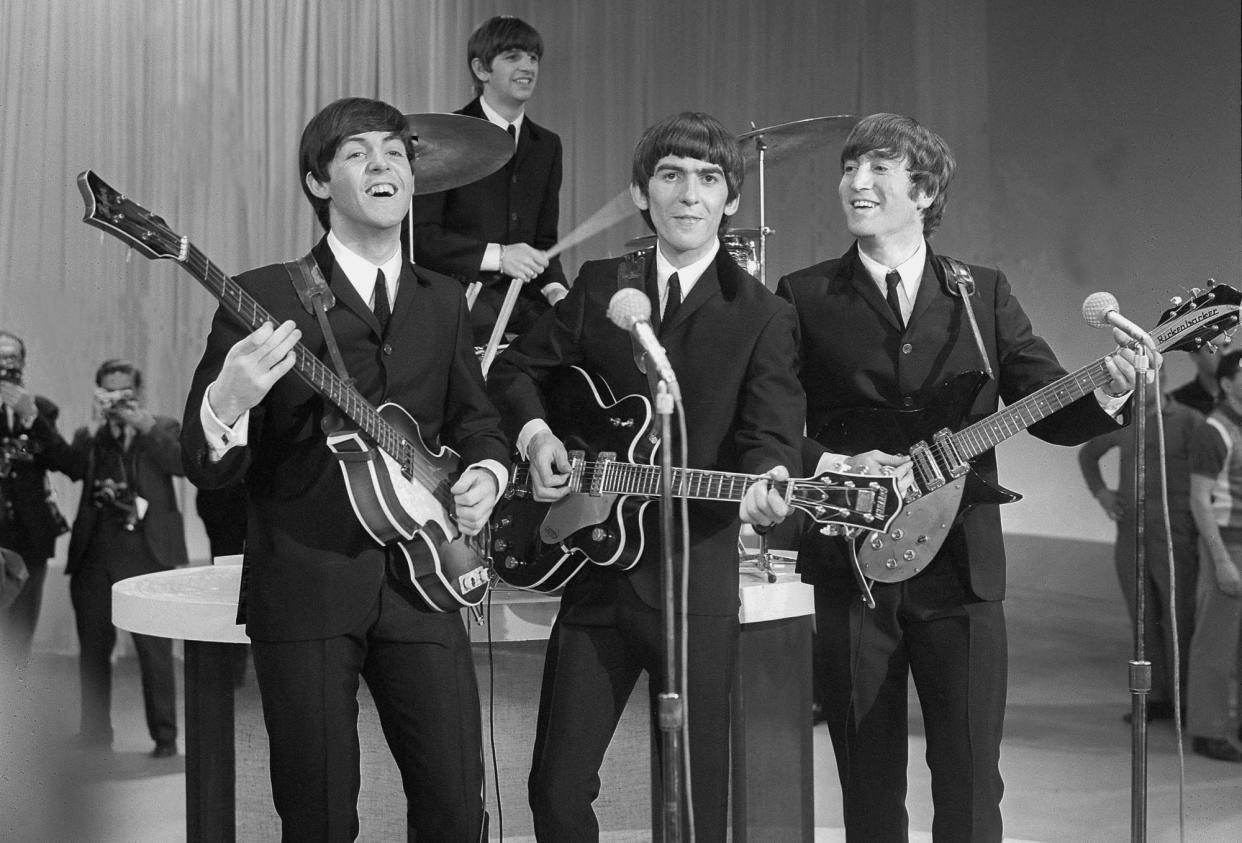‘An explosion of screaming and hysteria’: US fans on how they were introduced to the Beatles

What Janet DiGangi recalls most vividly about the day the Beatles came to town is eating cake and ice-cream with furious impatience. It was 12 September 1964, and DiGangi was 12, living in Boston, Massachusetts, the oldest of seven siblings. The Beatles were about to play Boston Garden but the family couldn’t leave until they’d celebrated her brother Peter’s second birthday with candles and presents.
“I was furious, because I didn’t want to be late,” recalls DiGangi, now 72. She had saved up all her babysitting money to buy the band’s second US album, Meet the Beatles! “I was so excited.” Thankfully, DiGangi made it to the show on time. It was “electric”, and sent fans wild. “It was just an explosion of screaming and hysteria,” she says.
Like many Americans who watched the Beatles arrive in the US – either on 9 February 1964 on their first Ed Sullivan Show, or those who caught their North American tour later that year – the experience for DiGangi fostered a lifelong love and fascination with the band from Liverpool. As she grew up from a schoolgirl to an adolescent to a young woman, she tagged along as the band’s sound developed, from the boys next door of A Hard Day’s Night to the mop-haired artists of Revolver to the mature and creatively fractious White Album.
Next month marks 60 years since the Beatles secured all the top five slots on the Billboard Hot 100 on 4 April 1964 – the height of Beatlemania in the US. “To look back 60 years from now, I remember things so vividly,” DiGangi says. “I totally remember watching them on television and just crying.”
DiGangi, whose favourite album is Rubber Soul, has passed on her passion for the band to the next generation, taking her niece to Abbey Road in London in 2017. “It was just as thrilling for me then as if it were 1969,” she says.
For many fans in the US, encountering the Beatles as teenagers sparked a lifelong desire to play music. Michael Shaw, a 76-year-old in Atlanta, Georgia, says he was part of the manic crowd of flailing limbs that greeted the band at Miami airport when they arrived for their second Ed Sullivan appearance, on 16 February 1964. Shaw was 16 and played lead guitar in a band called the Outcasts.
“The Beatles and the rest of the British invasion absolutely changed music and the style of music we were playing,” he says.
“I used to practise guitar four hours a day at that time, and I would sit down with my latest LP and play a song over and over trying to learn the chords,” Shaw says. As the Beatles’ sound matured, it was hard to keep up with George Harrison’s evolving style: “It really made me stretch,” he adds. Six decades on, Shaw – who says he owns a Höfner bass guitar signed by Harrison and Paul McCartney – is still in a band. They play southern rock. “I keep on trying to get my bandmates to cover some Beatles songs,” he says.
Ruth Yost, 71, says she “watched the Beatles on Ed Sullivan and felt the world was changing”. Aged 12, she took along binoculars when the Beatles came to Indianapolis, Indiana, on 3 September 1964.
Yost could hardly hear the music over the screams but it was enough to be in the same room with the Beatles. “I didn’t feel like myself, I felt like somebody else,” she says. “It was almost frightening, to think here I was.”
Yost became a collector of all things Beatles; her son now keeps her original LPs safe. Yost says she was a hesitant girl, the baby of a large family, and saw something of herself in George Harrison. She even dressed up as him for Halloween in 1964. “I always identified with George,” she says. “He seemed so sweet.”
Yost says the band got her through the turbulence of adolescence. “I feel like the Beatles – their music, their humour – helped a shy junior-high girl grow up through high school,” she says. The band broke up in April 1970, the year Yost graduated. “It was as if they stuck together to see me make it,” she says.
Susan Bendinelli says she saw the Beatles at San Francisco’s Cow Palace on 19 August 1964 with her older brother when she was 10. “They just had me from then on,” she says. “They had such an amazing energy, and their songs were like nothing we’d ever heard,” adding: “It was black-and-white to Technicolor.”
The seats were up in the gods and all she could see was “these four little Beatles on a stage”. She recalls being frustrated that the screaming drowned out the music. At the concert, Bendinelli, now 69, got a set of Beatles figurines – she still has Paul McCartney and Ringo Starr.
The Beatles helped her generation “find our voices”, she says. As she grew up, and the Beatles themselves became more political engaged, Bendinelli got involved in the anti-nuclear and anti-war movements, protesting against the US war in Vietnam, and promoting sustainability through Earth Day and local environmental activism.
“All through my life I’ve been an activist. And I don’t know if I would have done that if I hadn’t had those experiences when I was really young and watched the Beatles become activists as well,” she says. “They definitely created a foundation for me that I still feel I walk on.”

 Yahoo News
Yahoo News 
